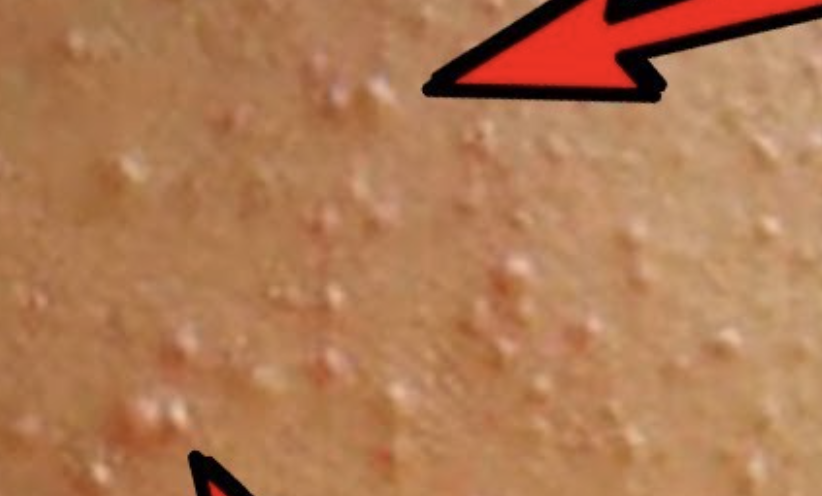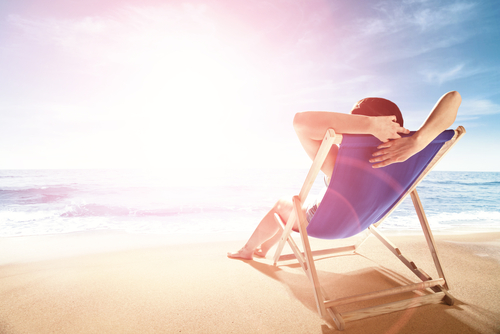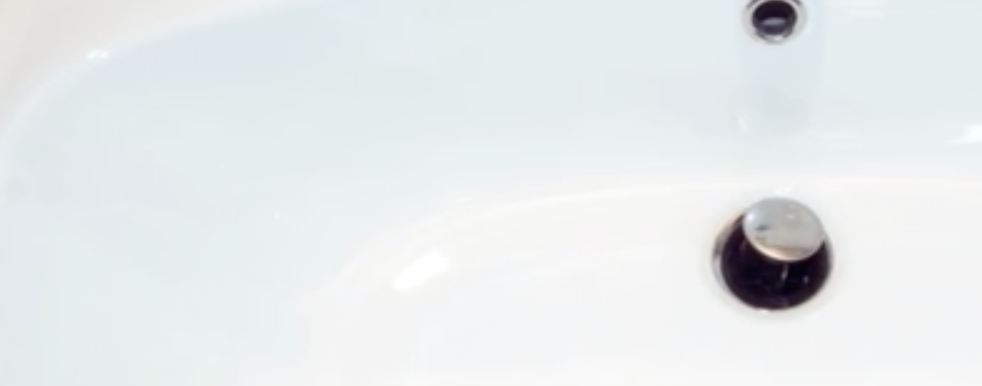She Realized That She Was Getting Chicken Skin On Her Arms. I Had No Idea This Is The Reason Why!

image via – youtube.com
If you have tiny, hard, whitish-red bumps that appear on the back of your arms, then you likely have chicken skin. It sounds a lot worse than what it actually is and the bumps are harmless. For most people, the worst part about having them is their appearance since they pop up randomly and look rash-like or similar to acne.
An estimated 40% of people suffer from the condition and you can easily self-diagnose yourself by checking for tiny bumps on the backs of your arms and legs. If you have it, chances are you’re already very much aware of it. However, many people don’t actually know what causes chicken skin or how they can combat it.
The medical term for the skin condition is keratosis pilaris. It’s named after the keratinization of hair follicles on the skin which happens when our bodies produce excess amounts of keratin, a skin protein. Basically, that extra keratin begins to clump together around hair follicles and causes a bump to form and raise up.
Eventually the hair follicles often become trapped underneath all of the excess keratin which blocks the pore and plugs it off. The hair keeps growing inside the closed off follicle, making it an ingrown hair, and if you look closely you can sometimes see it in the middle of the bump.
One of the main issues people have with chicken skin is that it’s notoriously hard to get rid of or control. It often appears worse in the winter when air temperatures are colder and moisture levels are lower. However, it also varies highly from person to person and one individual’s experience can be drastically different from another.
One product that gives visible results was Clearasil Ultra exfoliating scrub. It reduces the appearance and feeling of bumps and that it has worked to keep them at bay ever since she started using it. The active ingredient in the scrub is salicylic acid which is often a main ingredient in topical anti-acne treatments and creams.
It’s very important to always keep your skin moisturized and to apply lotion as soon as you get out of the shower or bath. Check out the video for more information and routines and remedies that can work for you. Maybe it can also work for you!
Please SHARE This With Your Family and Friends
This Simple Life Hack Will To Stop Your Thighs From Getting Chafed This Summer!

CHAFING is caused when heat causes us to sweat, our thighs touch, causing this painful rash. As women, this can occur whether or not we are overweight, (although it has been nicknamed “Chub Rub”), as many women carry more weight in their thighs, so the tendency for skin-on-skin contact in this area is quite common. Not that many women have the good fortune of having thighs that don’t touch. The video you are about to watch below, offers several great tricks for preventing the pain of chafing from occurring this summer!

WHEN EXERCISING wearing shorts, leggings or any compression type material will prevent your thighs from touching and causing the pain of chafing. If you enjoy WEARING SKIRTS OR DRESSES, there is no need to skip them; wearing a bike short underneath will do the trick. Not only are they designed to wick moisture away from your skin, but they will keep your thighs from touching. A more appealing and prettier choice that is less bulky, are BANDELETTES which slip around your thighs to keep them from touching.

There are also creams, oils and ointments that can be applied for prevention, which won’t get on your clothes as they get absorbed into your skin. According to “Runner’s World”, any DIAPER RASH CREAM that contains ZINC OXIDE will protect your skin, just as it does for babies! ANTI-PERSPIRANT works, but there is a much better solution known as BODYGLIDE which you can get in sports stores or through Amazon. COCONUT OIL, the natural wonder, is a great solution that not only smells great but has anti-bacterial properties.

Please SHARE This With Family and Friends
6 Signs You Have Mold Illness and May Not Even Know It!

There are all sorts of gross things that no one ever wants to find inside their house and mold comes in at the very top of the list. The nasty, unsightly fungi can be found practically anywhere on Earth and is virtually impossible to avoid. It favors warm, damp, shady places like bathrooms and basements, which are the spots where it’s most likely to be found indoors!
Even if you can’t see any visible mold, there’s probably some growing wherever there are tiny cracks and crevices around your home. Other than leading to potentially extensive structural damage, many types of mold are also highly toxic and can be extremely harmful to human health.
That’s why it’s crucial to keep your home as mold-free as possible and if you ever notice any sign of it growing, deal with it immediately to prevent it from spreading any further.
There are countless species of mold fungi that exist and according to the CDC’s mold fact page, it’s estimated that there are anywhere between 10-300 thousand different types. The most common variants found indoors include the dreaded Stachybotrys Chartarum, aka toxic black mold, which produce mycotoxins that are capable of causing multiple health issues.
In addition to mycotoxins, mold spores also get released as mold grows and we end up ingesting and breathing both of these toxins directly into our bodies.
Once mold gets inside of us it can trigger various problems and reactions including allergies, inflammation, skin rashes, asthma, other respiratory issues and more, all of which are covered below. These are the top symptoms that are associated with mold related illness:
1. Headaches- If you suffer from frequent headaches and migraine pain it may be a symptom of mold exposure. Oftentimes sinuses become inflamed or infected due to allergies to mold particles in the air. The accompanying pressure causes many people to experience headaches and migraines.
2. Changes in Eye Health- Red, itchy, watery eyes are a common sign of mold exposure. Changes in eye sensitivity should be taken seriously and never be ignored. Mold triggers an allergic response in our bodies and may cause mild to intense itching, redness, blurry vision, and watery eyes.
3. Dry Skin and Rashes- A lesser known side effect of mold exposure is itchy, flaky, dry skin. Sometimes people develop rashes or hives and the inflamed areas may be patchy in appearance and extremely uncomfortable. Always do your best to avoid scratching and breaking the skin, which opens you up to a high risk of infection, and seek treatment if a rash is accompanied by intense pain, swelling, or discharge. Those may be signs that you’re having a severe allergic reaction and your body can’t handle it.
4. Breathing Difficulty– Perhaps the most common symptoms of mold illness are respiratory-related issues. Coughing, wheezing, not being able to breathe deeply or catch your breath are all red flags that point to mold allergies and exposure. Symptoms are often worse in people with asthma as the tiny mold spores and mycotoxins in the air can easily trigger an asthma attack.
5. Aches and Pains- Muscle pain that is unexplained and has no clear cause may be a symptom of mold illness. Some people experience mild achiness, but others describe intense, sharp, and even shooting types of pain.
6. Depression- Feeling down in the dumps and depressed has been linked to mold illness. Studies and science have found that damp, dark living spaces are ideal for both mold growth and negative effects on our mental health. On top of that, the multitude of other health issues that mold exposure triggers don’t help at all and only make depression worse. To improve indoor air quality try opening the windows and air out your home. Keeping a fan on to move air around and placing plants throughout your home will also help.
Additional signs of mold illness include a runny nose, postnasal drip, sneezing, chest tightness, weight gain, fatigue, numbness, shaking, stomach pain, nausea, diarrhea, and twitching. While many of these symptoms are commonly attributed to a number of other health issues and allergies, if you think you may have been exposed to mold and they persist, you should definitely seek treatment. Your doctor can help you, but more importantly you can help yourself by keeping your house dry, clean, and as mold free as possible.
Please SHARE This With Family and Friends




